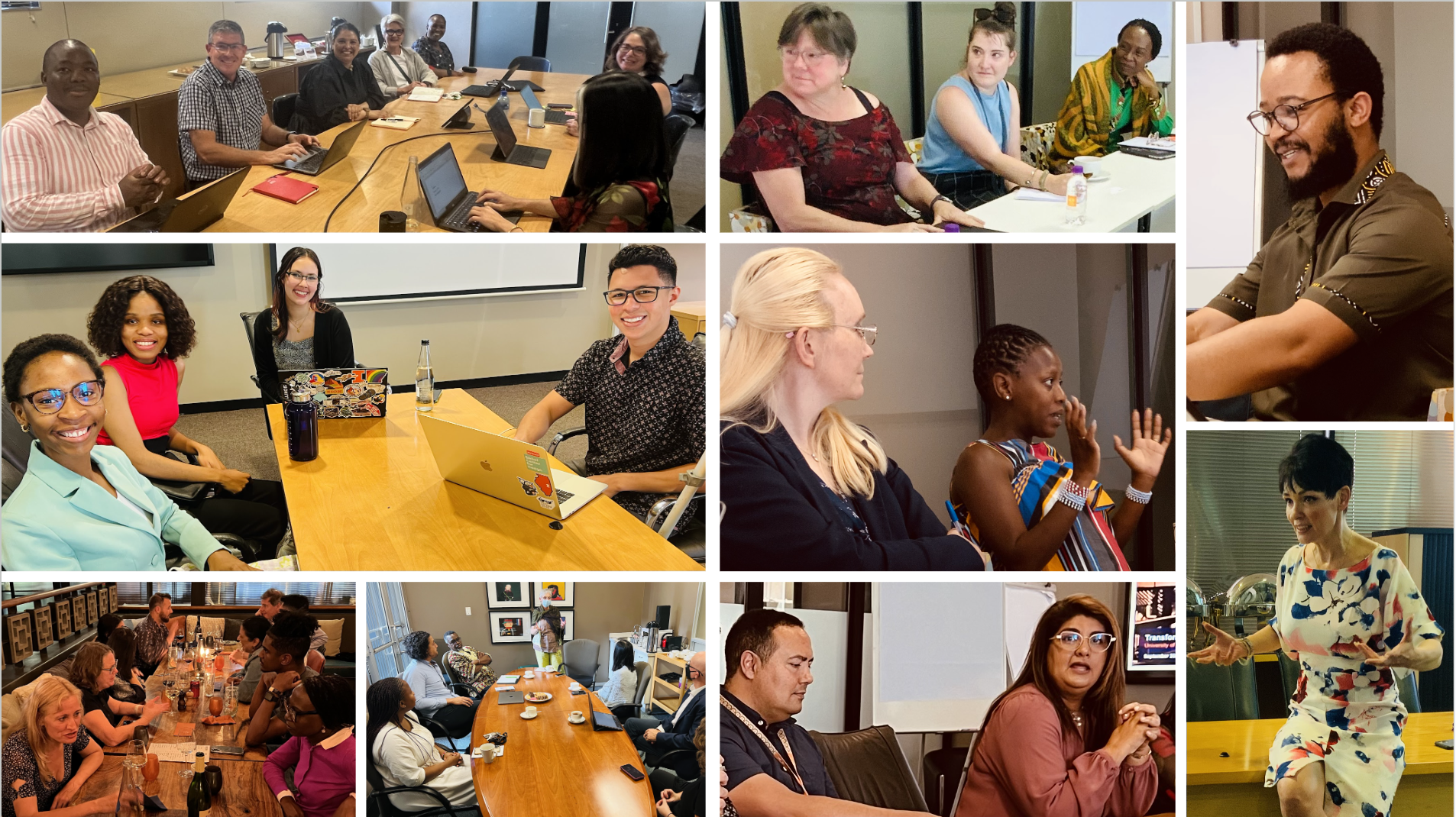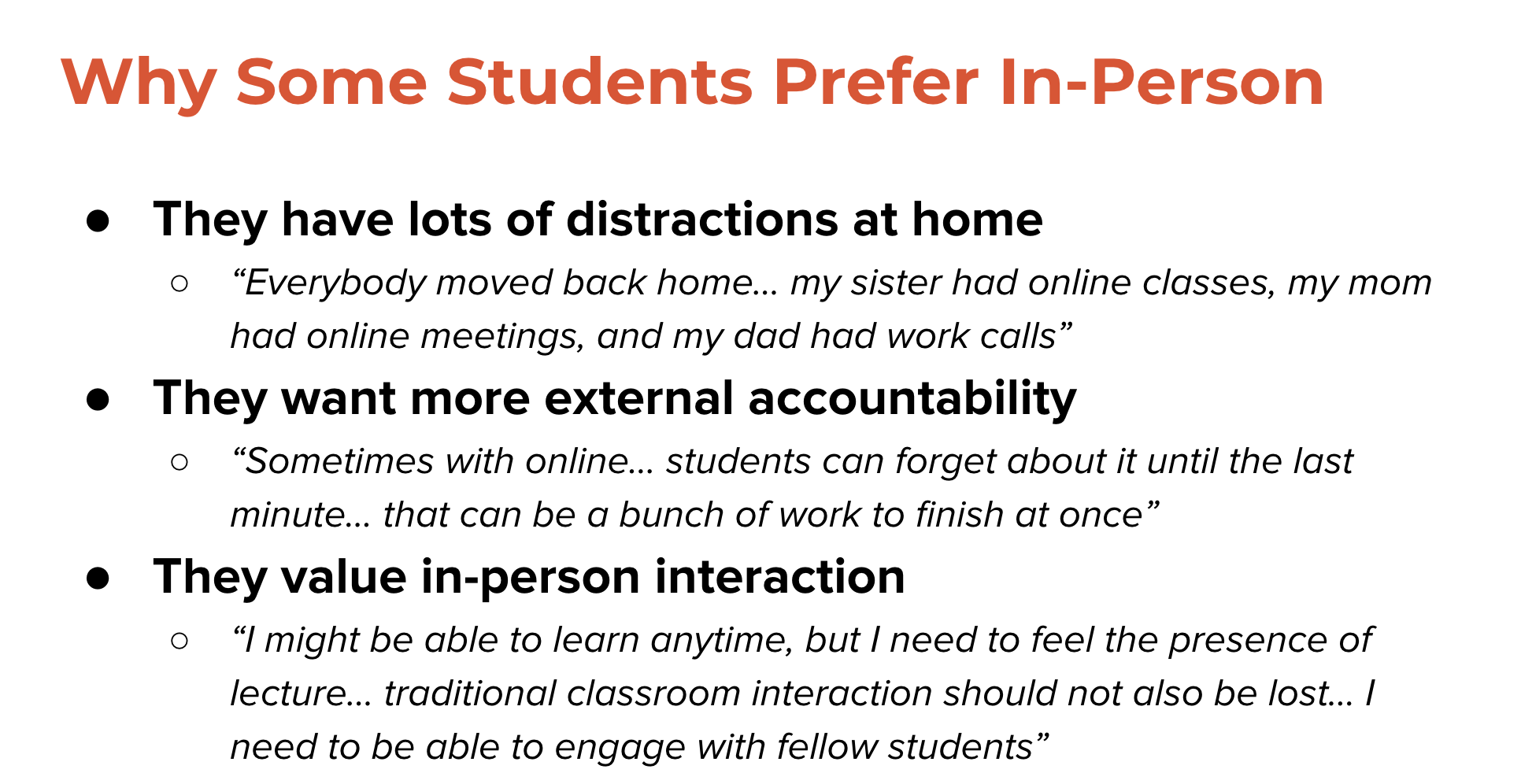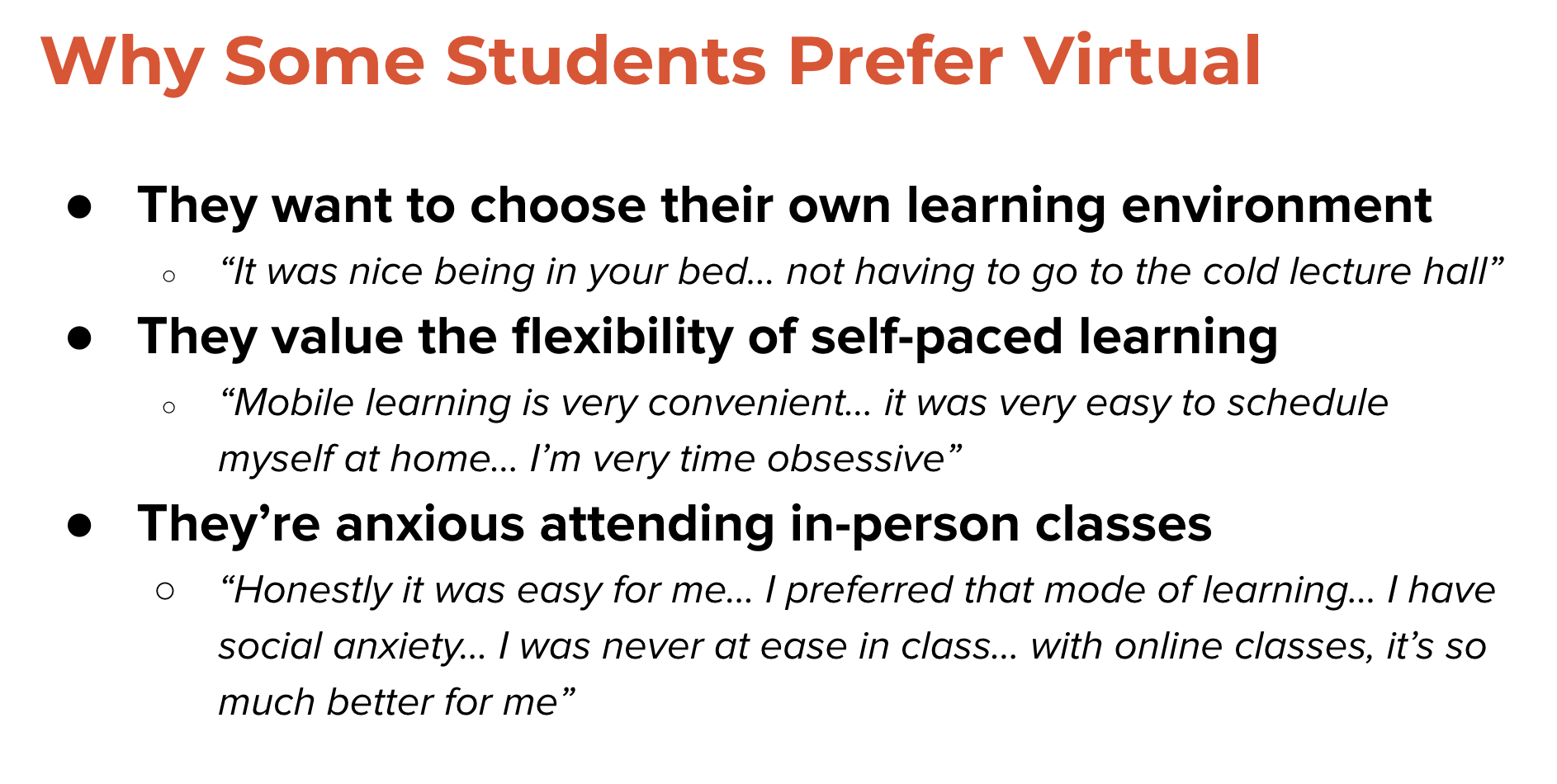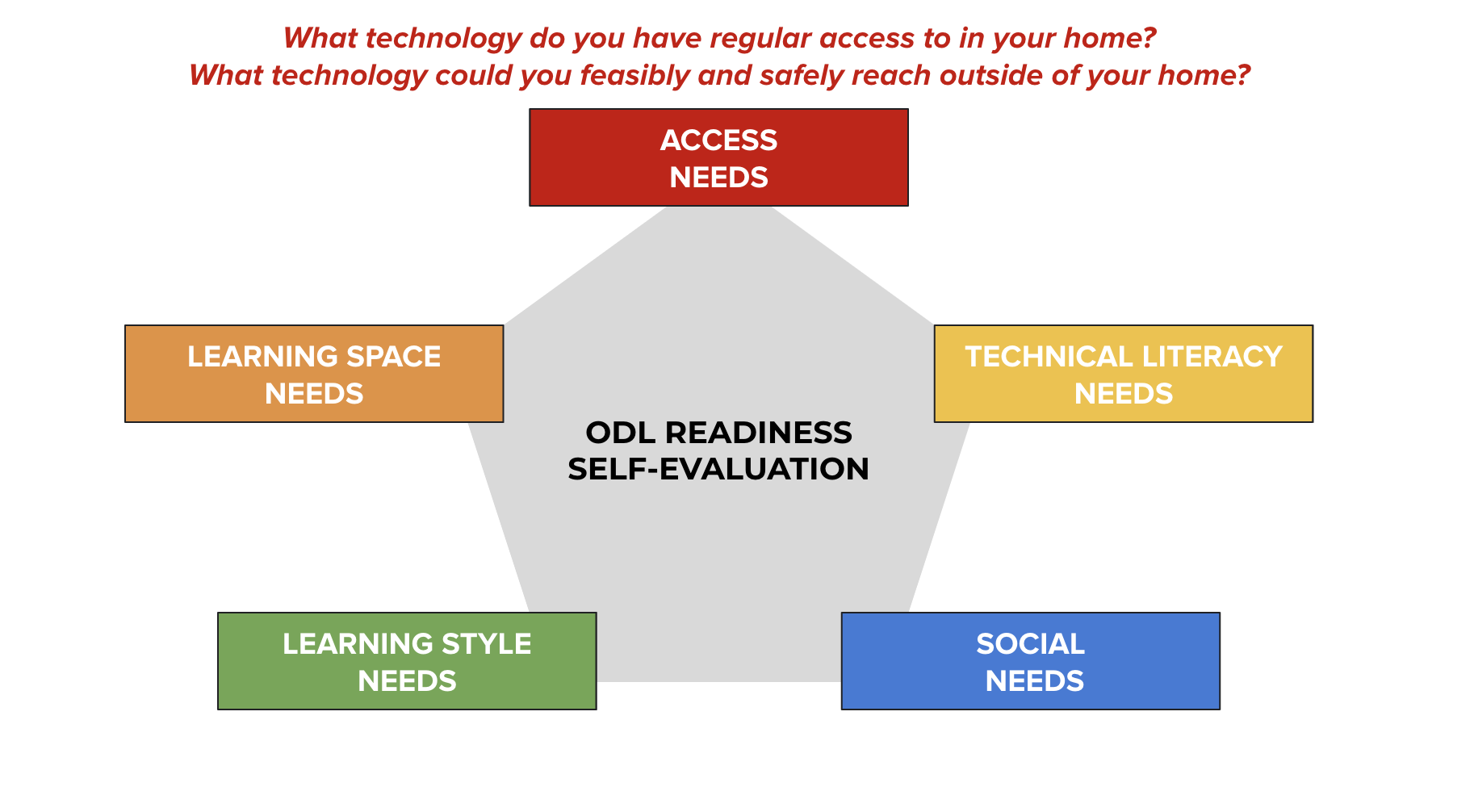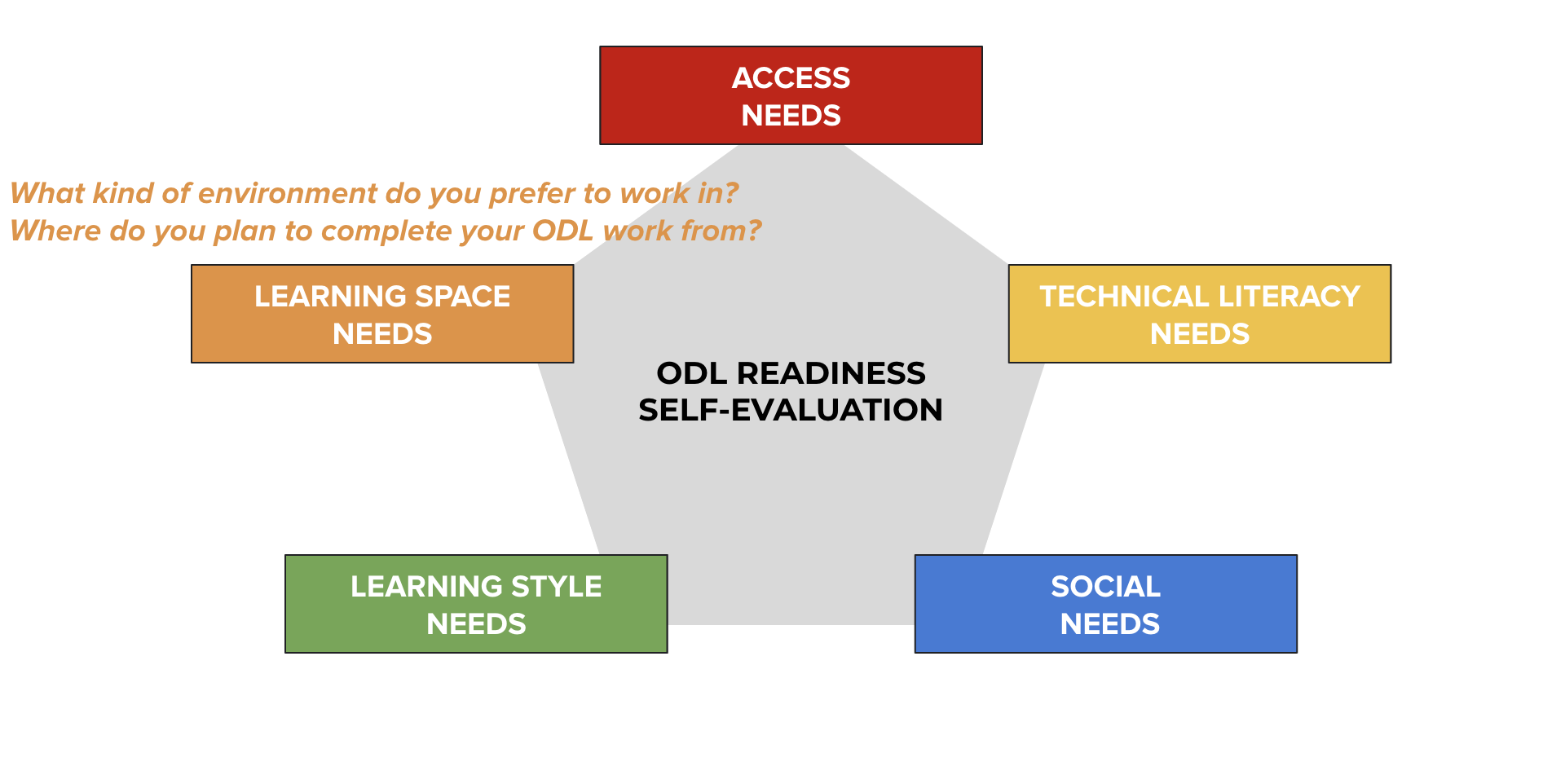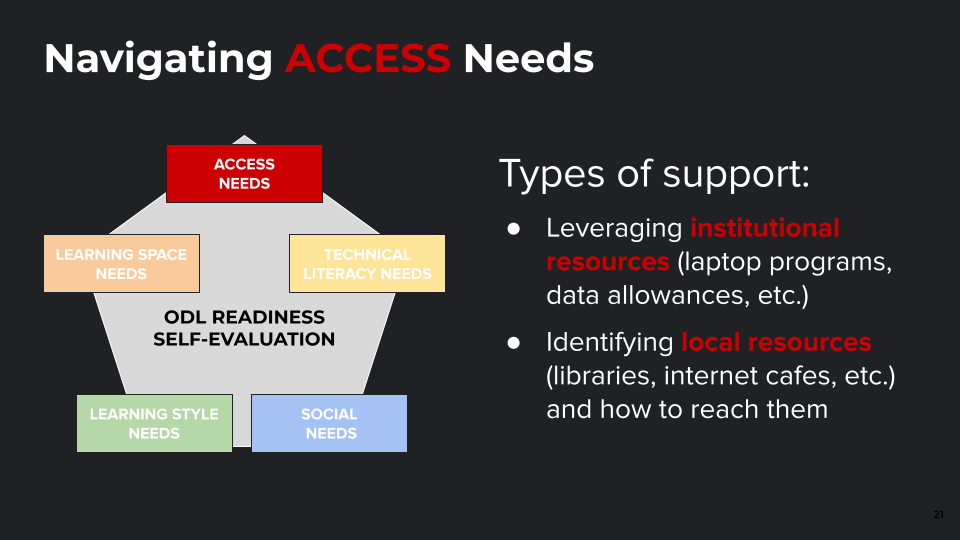Researching for Digital Equity: South African Learning Platform Study
Illinois Design Consulting (IDC), in collaboration with Rokwire, embarked on a project to improve e-learning platforms in South Africa, with a focus on college students at the University of Johannesburg. Our research identified key challenges related to digital access, student engagement, and online distance learning (ODL) readiness. These findings are shaping the development of more inclusive and efficient digital learning solutions that cater to both local needs and global educational standards, ensuring students and faculty are better supported in a rapidly evolving digital education landscape.
The Team
Jabari Cooke(UX Research Consultant)
Kaitlyn Agnitti(UX Research Consultant)
Ethan Igunbor(UX Research Consultant)
Jake Fava(UX Project Lead)
Rachel Switzky(Director of Design)
Reitu Mabokela(International Relations)
Sammer Jones(International Relations)
Kim Nguyen-Jahiel(Technology Services)
William Sullivan(Rokwire)
My Role
As a UX Research Consultant, I conducted field research in Johannesburg, South Africa, where I interviewed 15 students and documented insights from another 15 to inform the design of an E-learning platform. My work focused on identifying key challenges such as limited internet access, varying levels of digital literacy, and the critical need for social engagement in remote learning environments. I helped establish the need for an ODL Readiness Self-Evaluation tool, which would assess student needs ranging from technical literacy to learning spaces and social interaction.
Research Goals
Project Goal: Understand the needs, challenges, and readiness of students and faculty at the University of Johannesburg in adopting and utilizing E-learning platforms, with a particular emphasis on Online Distance Learning (ODL).
Objective: Identify the most effective content for online courses, evaluate the current E-learning platform’s performance, and assess students' ODL readiness, focusing on factors such as access, technical literacy, and learning environments.
Outcome: Provide recommendations for a collaborative E-learning platform between South African professors and University of Illinois Urbana-Champaign students, addressing key challenges like internet connectivity, technical literacy, and home environments. Additionally, establish the need for an ODL Readiness Self-Evaluation Tool to ensure students are adequately prepared for online learning.
Research Methodology
Our approach began with a thorough review of an existing e-learning degree platform in the United States, which allowed us to set a foundation and align our objectives for the project. To gather early insights, we conducted five preliminary interviews with Sub-Saharan African students, aiming to understand the expectations and unique needs of our target audience in South Africa. Upon arrival in Johannesburg, we launched an extensive field study at the University of Johannesburg, where I interviewed 15 students and documented insights from another 15, and the rest of the team conducted in-depth interviews with 28 faculty members. These interviews provided a comprehensive understanding of the local educational landscape, highlighting key barriers such as internet accessibility, digital literacy, and the balance between in-person and virtual learning preferences.
Following the data collection phase, we performed an in-depth analysis and synthesis of our qualitative findings. We identified patterns in student and faculty behavior, uncovering the specific challenges and opportunities for integrating an e-learning platform into the South African educational system.
Analysis and Synthesis Process
After conducting 58 interviews, we gathered a significant amount of qualitative data. The entire project team then met in person to synthesize these findings using a Miro board. By clustering similar ideas, we identified common themes and drew connections between the different groups, helping us gain a clearer understanding of the data.
CRUCIAL INSIGHTS(Students)
By synthesizing the interviews from our field study, which included 4 graduate students and 26 undergraduates, we identified students as one of the primary user groups for integrating an E-learning degree platform. Regarding this user group, two main categories emerged from our interviews: students who preferred in-person learning and those who favored virtual learning. Below are the reasons for their preferences:
Student 2x2 matrix:
To present students’ needs clearly, we developed a 2x2 matrix to categorize students based on two key factors: learning preference and accessibility to resources. The graphic below illustrates how this matrix helps us identify opportunities to better support different student groups based on their unique needs.
In the top-left quadrant (low access, preference for virtual learning), the challenge is how to provide these students with the tools they need to succeed despite unreliable access to resources like WiFi or electricity. The question posed is, “How might we give low-access students that prefer online learning the tools they need?”
In the top-right quadrant (high access, preference for virtual learning), we see an opportunity to connect these students to more virtual programs, leveraging their preference for digital learning environments. The question here becomes, “How might we connect high-access students that prefer online learning to new virtual programs?”
In the bottom-left quadrant (low access, preference for in-person learning), the focus shifts to ensuring students who need face-to-face interaction, but have limited access, can still engage in effective learning. The question posed here is, “How might we recruit prospective students who need in-person learning to programs built for their learning style?”
By using this matrix, we can tailor educational solutions and programs to meet the specific needs of different student groups, ensuring that all students, regardless of their access or preferences, have opportunities to succeed.
CRUCIAL INSIGHTS(Faculty)
After synthesizing the interviews from our field study, which included 28 faculty members, we identified faculty as the second primary user group for the integration of an E-learning degree platform. This group consists of faculty members who manage and post the content, playing a critical role in the platform's success. Below is a summary of key insights we gathered from the faculty interviews.
High-Level Recommendations
From our synthesized findings, it became clear that developing an Online Learning system would present two major challenges: one before the semester and one during the semester. Before the semester, the key challenge is: How might we help students evaluate their suitability for Online Distance Learning (ODL)? This would enable students to determine if the online learning environment aligns with their needs and preferences. During the semester, the challenge shifts to: How might we support remote students in navigating their particular ODL needs? Continuous support throughout the semester is essential to ensure students succeed in an online learning environment.
To address the first challenge, we developed the concept of an ODL Readiness Self-Evaluation. This tool is designed to help students assess their preparedness for online learning. Below is a brief mockup of the tool, along with an outline of what it would evaluate.
To address the second challenge, we created a visual to illustrate how we could provide ongoing support for students once they are enrolled in online classes. These visuals helps clarify our approach to ensuring that students receive the assistance they need throughout the semester to navigate their Online Distance Learning (ODL) experience successfully.
Impacts
Improved E-learning Access: By identifying key challenges related to internet access and technical literacy, we developed recommendations for tools and support systems that enhance students’ ability to participate in online learning, particularly those with limited access.
Higher Faculty and Student Engagement: Clearer distinctions between faculty and student needs allowed us to create tailored solutions for both groups, improving interactions with the platform and increasing satisfaction for both users.
Increased Virtual Learning Adoption: By addressing the concerns of students who preferred in-person learning but had access to virtual environments, our recommendations led to better adoption of hybrid and online learning solutions.
Data-Driven Decision Making: Our development of the ODL Readiness Self-Evaluation provided actionable insights into student preparedness, allowing institutions to make informed decisions about how best to support different student groups in the online learning environment.
My Learnings & Achievements
UX Contribution to E-learning Development: Through synthesizing interview data and identifying key user needs, I played a critical role in shaping the design of the E-learning platform. My analysis of user preferences and challenges influenced the development of support tools for both students and faculty.
Skill Enhancement in UX Research Methods: Gained valuable experience in conducting field studies and synthesizing qualitative data. My role in the research deepened my understanding of human-centered design and how to apply it to large-scale projects such as the E-learning system.
Collaboration and Communication Skills: Successfully collaborated with cross-functional teams to present findings and recommendations. This experience not only enhanced my ability to work within diverse teams but also sharpened my presentation skills when communicating complex UX research insights to stakeholders.

